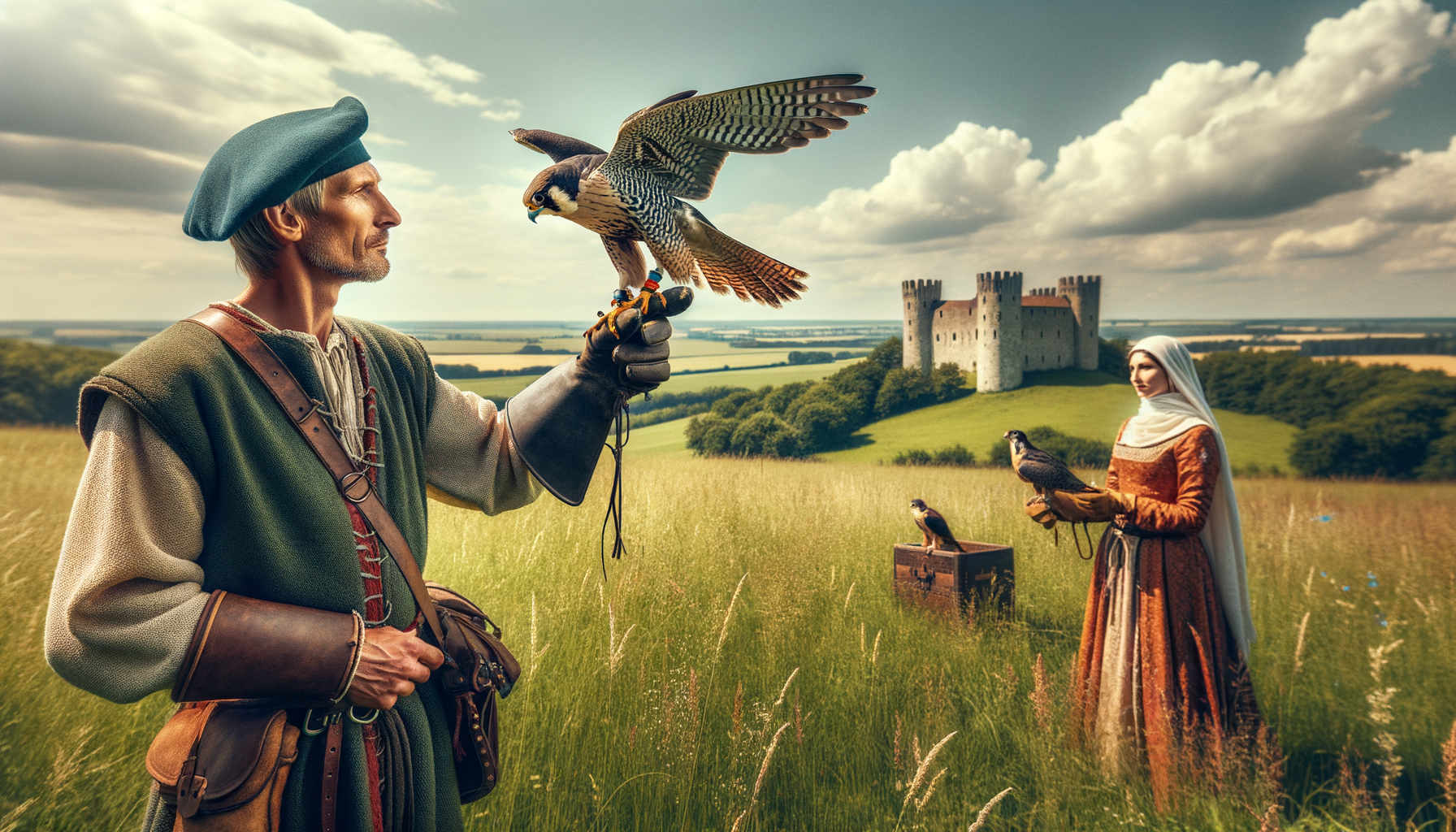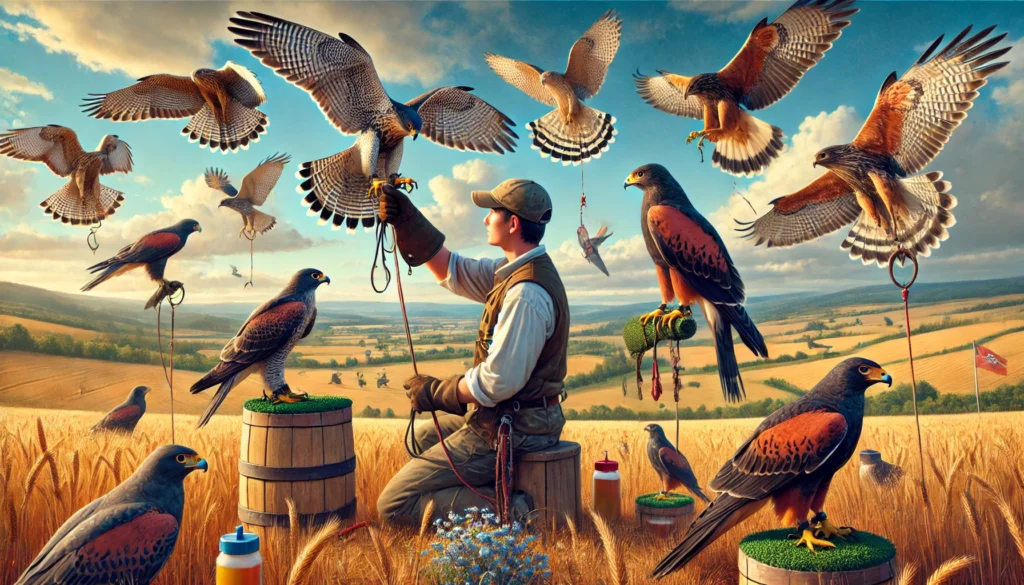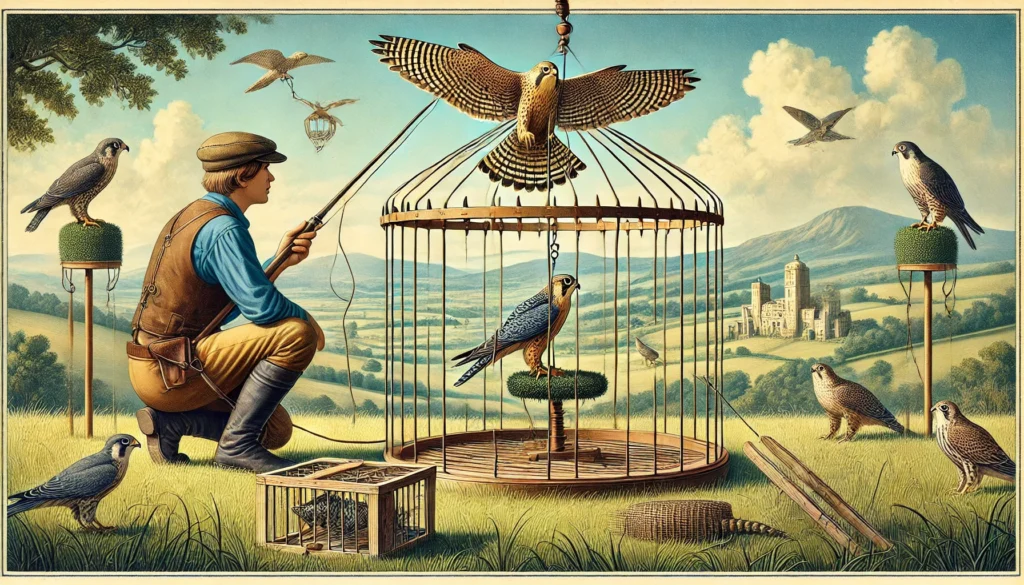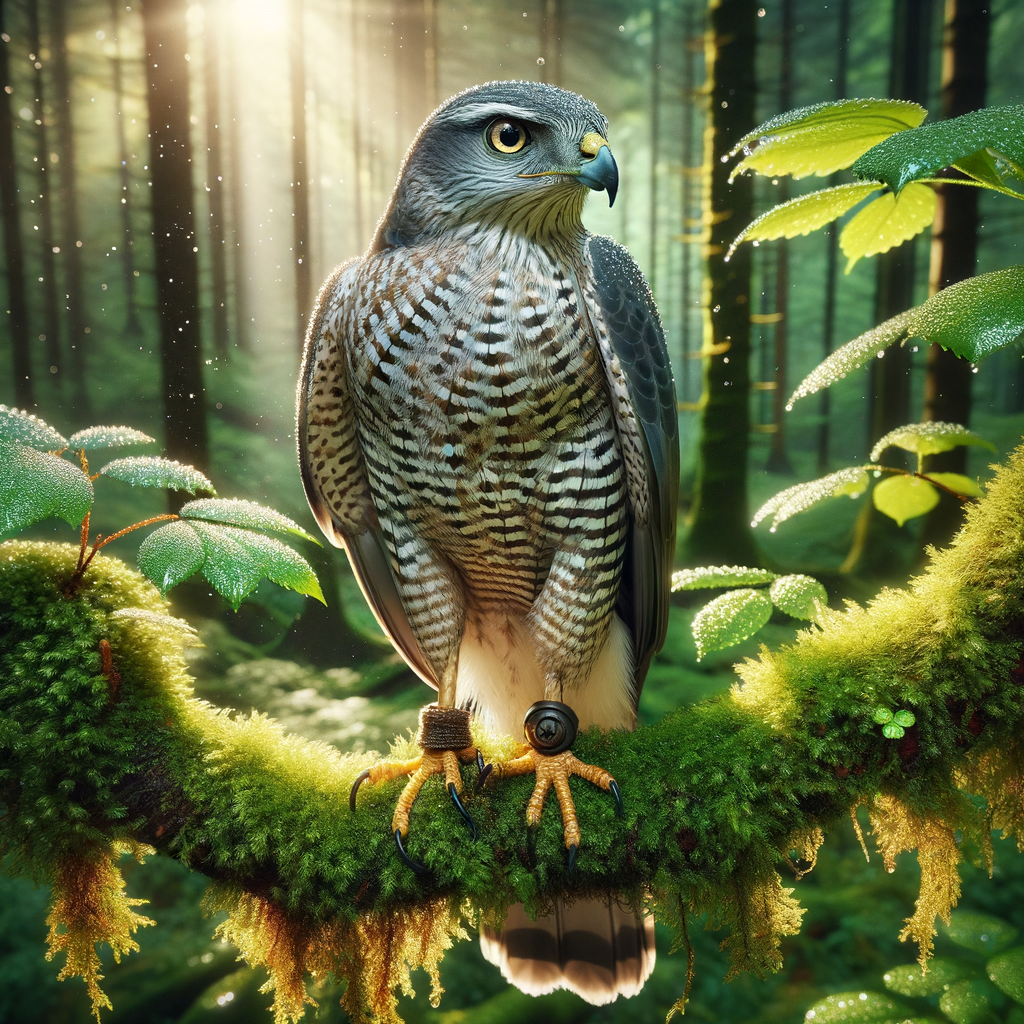Fascinating Facts About Falconry in Medieval Europe
- Ancient Skill: Falconry was a popular and respected sport in medieval Europe, showcasing the bond between humans and birds of prey.
- Social Status: Only the wealthy and noble were typically involved in falconry, symbolizing prestige and power.
- Training Art: Training a falcon required patience, skill, and knowledge, making it a respected practice.
- Cultural Impact: Falconry influenced art, literature, and laws, highlighting its importance in medieval society.
- Usage in Hunting: Falcons were used to hunt game birds and small animals, providing food and entertainment.
- Moral Guidelines: Rules and ethics governed falconry, ensuring the welfare of both birds and prey.
- Enduring Legacy: The traditions and techniques from medieval falconry still influence modern practices today.
Discovering Falconry in Medieval Europe: An Irish Tale of Tradition and Bravery
At Learn Falconry, we believe that delving into the fascinating world of medieval falconry is like unrolling an ancient manuscript full of secrets and adventures. You’ll discover how this captivating tradition shaped European culture and why it’s more relevant today than ever before. So, put on your imagining cap and let’s journey through time together’because understanding the past is the best way to appreciate the present.
Exploring Medieval Falconry in Europe
Falconry, the ancient art of hunting with trained birds of prey, has a rich history, especially notable during the medieval period in Europe. This period, known as medieval falconry, holds a special place in the hearts of many falconry enthusiasts and historians alike. Let’s delve into its fascinating past and explore how it shaped European falconry as we know it today.
The Origins and Importance of Falconry in Medieval Europe
During the medieval era, falconry was not just a sport but a significant aspect of life, especially among the European nobility. Kings, queens, and knights were often depicted with their prized falcons, showing their high status and skill. This practice was deeply intertwined with the culture and daily life of the time.
Falconers of this period employed various birds for hunting, each selected for its specific skills. For those interested in learning more about these birds, you can explore different species of falcons on our website.
The Role of Falconers and Their Falcons
Historically, falconers played a crucial role in training and caring for their birds. The methods used in training falcons during medieval times have evolved, but the essence remains the same. To understand more about these training techniques, visit our section on training a falcon.
Falcons were not just tools for hunting; they were companions and symbols of power and prestige. The process of training and maintaining a falcon requires skill, patience, and understanding of the bird’s behavior and needs. If you’re just starting out, our guide on falconry for beginners provides valuable insights and tips.
Falconry: A Noble Pursuit
Falconry during the medieval era was a pursuit reserved for the noble and wealthy due to the resources required to maintain the training and housing of these magnificent birds. Many royal families and high-ranking officials proudly showcased their falcons as a testament to their wealth and status.
The equipment used was also quite specialized, designed to ensure the falcons were well cared for, protected, and controlled. For more detailed information about this equipment, explore our guide on falconry equipment.
Historical Falconry Practices
Medieval falconry involved a variety of practices and techniques that have been documented in historical texts. These manuals provided valuable insights into the methods used by falconers of the time. You can further explore some of these historical texts through our collection of falconry books.
Additionally, the exchange of falconry knowledge played a significant role in the spread and evolution of the practice across different regions. This cultural exchange helped shape the various styles and techniques that are still studied and admired today. For a broader perspective on falconry’s impact across different cultures, check out our section on falconry in cultures.
Continuing the Tradition
Falconry has continued to evolve, influenced by advances in technology, changes in legal regulations, and ongoing conservation efforts. To understand how these factors continue to shape the practice today, visit our pages on modern falconry and falconry and conservation.
Understanding the historical roots of falconry in medieval Europe not only enriches our appreciation of the sport but also highlights the skill and dedication of those who have kept this tradition alive through the centuries. To explore more about the history and evolution of falconry, visit history of falconry in medieval Europe.
Falconry remains a captivating pursuit, drawing enthusiasts from all walks of life into its rich and storied past. By learning about its historical significance and the techniques passed down through generations, modern falconers can continue to honor and uphold this ancient tradition.
Falconry in Medieval Europe
Introduction to Falconry
Falconry, the art of training birds of prey to hunt, has a rich history stretching back centuries. This ancient practice was especially prominent in medieval Europe, where it held significant cultural and social importance.
Historical Context
Global Beginnings
Falconry’s origins trace back globally, but it gained particular prominence in Europe during the medieval period. Notably, the Holy Roman Emperor Frederick II employed falconers from various regions to enhance his hunting prowess.
Tools and Training
Human-Animal Interaction
Training a falcon required specific tools and techniques. Falconers used items like hoods, which covered the birds’ eyes to keep them calm, and lures, which were used to attract and train the birds.
| Tool | Purpose |
|---|---|
| Hoods | Keep the birds calm by covering their eyes |
| Lures | Attract and train the birds |
| Jesses | Leather straps attached to the birds’ legs for control |
| Bells | Small bells to help locate the birds during hunting |
Social Significance
Power and Aristocracy
In medieval society, falconry was more than just a sport; it was a symbol of power and prestige. Ownership of trained falcons signified high social status and was often restricted to the nobility and royalty.
Diplomatic Gifts
Falcons were also used as diplomatic gifts. Presenting a rare or particularly well-trained falcon could forge alliances and show respect between leaders and sovereigns.
Cultural Influence
Chivalry, Warfare, and Religion
Falconry intertwined with various aspects of medieval life, such as chivalry, warfare, and religion. Falcons appeared in art and literature, symbolizing these themes and adding to the cultural tapestry of the time.
Conservation and Modern Relevance
Conservation Efforts
Falconry has played a crucial role in conserving endangered birds of prey. Through captive breeding and reintroduction programs, medieval practices have helped modern efforts to protect species like the peregrine falcon.
Example of Medieval Falconry Practice
Castle Falconers
At places like Hohenwerfen Castle, professional falconers who had passed rigorous exams in hunting and falconry cared deeply for the birds. These falconers often had backgrounds in forestry or veterinary science, showcasing the depth of knowledge and dedication required.
Falconry Today
Modern Practice
Today, falconry continues as a regulated practice adhering to strict guidelines to ensure the welfare of the birds and the sport’s longevity. Falcon shows and training courses provide a glimpse into this ancient art, connecting the past to the present.
Conclusion
By exploring the tools, social significance, and cultural influence of medieval falconry, we gain a deeper understanding of its rich history and continued relevance. Through responsible practice and conservation, falconry remains a living bridge to medieval Europe’s past.
The Legacy of Falconry in Medieval Europe
Falconry in medieval Europe was much more than just a hunting technique; it was a rich and intricate part of culture and society. From its global beginnings, where falconers traveled far and wide to practice their craft, to its strong ties with power and aristocracy, falconry symbolized prestige and skill. The unique relationship between humans and their trained birds of prey was showcased through careful training methods and special tools such as hoods and lures.
Falconry also played significant roles in diplomacy, chivalry, warfare, and religion. Falcons were often given as prestigious diplomatic gifts and were depicted in medieval art and literature as symbols of nobility and bravery. Conservation efforts, even in those times, showed the importance of these magnificent birds, and modern-day practitioners continue this legacy with strict guidelines to protect them.
Today, falconry remains a respected practice, bringing people closer to nature and highlighting the deep bond between humans and birds. This historical tradition, with its cultural roots and ongoing relevance, serves as a testament to the enduring fascination and respect our civilization holds for these majestic creatures.



